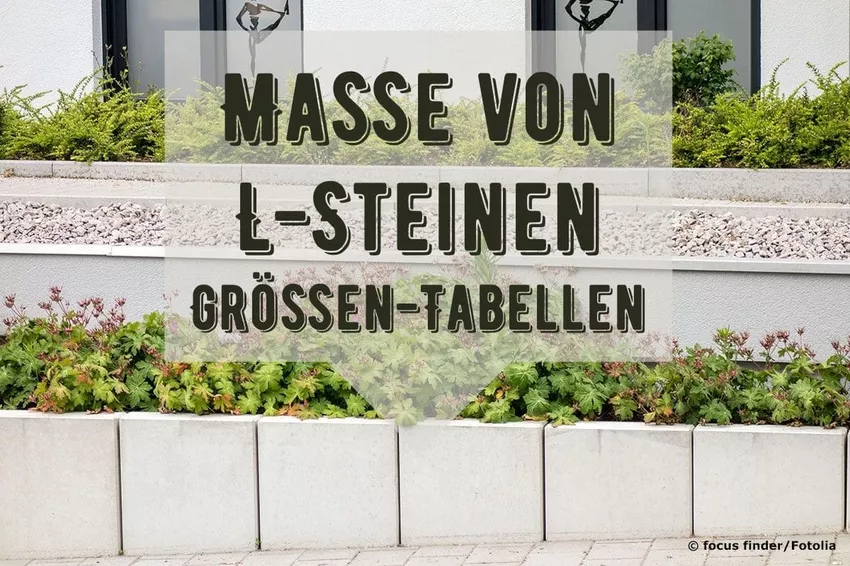
When terrain needs to be intercepted, the angle stones come into their own. From garden design to floor-to-ceiling retaining walls, a wide range of dimensions offer the right L-brick for every application.
In a nutshell
- there are wall panes with and without additional metal inserts
- the dimensional grid can vary from manufacturer to manufacturer
- a structural engineer should be called in for large support heights
Different manufacturers - different dimensions
Although one would think that almost all of our products are subject to some standard, there is no binding system of measurement when it comes to angle stones. Many manufacturers use similar dimensional grids, but these can deviate at any time in individual cases - especially with special components.
Kronimus
Kronimus is one of the major manufacturers of L-stones. For high requirements, the manufacturer offers steel-reinforced wall sections, for lower loads, on the other hand, non-reinforced L-bricks made of concrete in various sizes.
Wall panels (reinforced)

Corner elements 90° outside corner, one-piece

Corner elements 90° outside corner, two-part

Notice: In addition, Kronimus offers various special molded parts, such as rounded "corners" or molded parts outside the 90-degree corners. The height dimensions are limited in their variety, but are generally based on the grid known from the standard stones.
L-bricks (unreinforced)

EHL
Especially in the statically demanding area, on the other hand, another well-known manufacturer, EHL, is positioning its angle stones. The steel-reinforced L-stones are referred to here as "support brackets" and are available in different sizes.
Support bracket, length 100 cm

Notice: All elements are also available with a length of 50 cm. However, these angle stones are offered by EHL as an addition to the 100 grid and are not marketed as independent wall sections.
Corner elements 90° outside corner

Corner elements 90° inside corner

Notice: Other moldings in other angles are available in the well-known grid, but with limited height.
frequently asked Questions
Which angle stones do I use for what?Unreinforced concrete parts can only be loaded to a limited extent. They are therefore only suitable for low support heights, such as in garden design, for leveling driveways or for supporting small excavations. The manufacturers therefore only offer them up to a height of around one and a half meters. On the other hand, reinforced angle components, i.e. those reinforced with construction steel, can also absorb extreme loads and are therefore suitable for almost all areas of use around the house and garden.
How do I choose the right angle stones?Many manufacturers offer load tables from which you can select the right products, taking into account the installation situation and the ground level. However, as soon as further structures are to be erected on the wall or heights of around 1.50 to 2.00 meters are exceeded, the dimensioning should definitely be carried out by a structural engineer.
Can I also cut L-Bricks for other required dimensions?Unreinforced angle stones can be cut with a suitable cut-off grinder. Reinforced molded parts, on the other hand, must not be modified, as otherwise the concrete covering of the bars is no longer given and the service life is therefore significantly reduced.